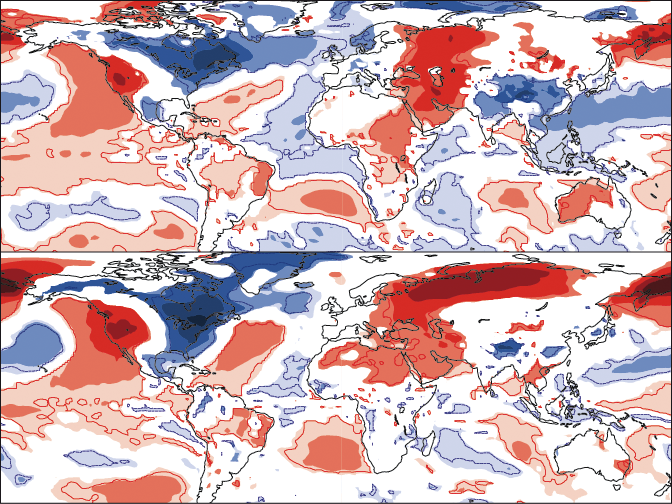

ECMWF has launched a data portal for sub-seasonal to seasonal (S2S) weather forecasts to help researchers study predictability on time-scales of up to 60 days.
The S2S database was released to the research community on 6 May 2015 following extensive consultations between ECMWF and its S2S partners.
It has been developed as part of the five-year S2S research project on sub-seasonal to seasonal prediction launched in November 2013 by the World Weather Research Programme (WWRP) and the World Climate Research Programme (WCRP).
The S2S database complements the TIGGE (THORPEX Interactive Grand Global Ensemble) archive, which gives access to global forecasts from a range of forecasting centres and has become a focal point for research projects, including on predictability and the prediction of severe weather.
It will help researchers to study issues such as:
- the implementation and benefits of a multi-model approach to sub-seasonal to seasonal prediction
- the sub-seasonal to seasonal predictability of extreme events
- the representation of sources of sub-seasonal to seasonal predictability in different models.
The database gives access to forecasts and re-forecasts up to 60 days ahead from ECMWF and ten other forecasting centres: Australia’s Bureau of Meteorology (BoM); the China Meteorological Administration (CMA); Environment Canada (EC); Italy’s Institute of Atmospheric Sciences and Climate (CNR-ISAC); the Hydrometeorological Centre of Russia (HMCR); the Japan Meteorological Agency (JMA); the Korea Meteorological Administration (KMA); Météo-France; the US National Centers for Environmental Prediction (NCEP); and the UK Met Office.

Multi-model comparisons. A possible use of the database is to make comparisons between the output of different forecasting centres. The image shows forecasts of 2-metre temperature anomalies from three S2S models and a verification panel based on observations. The forecast starting date is 22 January 2015 and the forecast range is days 12–18.
Near real-time forecasts from four data providers (BoM, ECMWF, JMA and NCEP) have been ingested routinely since January 2015. Two more models are due to be made available before the end of June and all 11 models are intended to be available by the end of 2015.
CMA has expressed an interest in becoming a second archiving centre. ECMWF and CMA will cooperate to ensure the timely synchronisation of both databases.
Users can explore the database by visiting the S2S data portal but are encouraged to use the ECMWF Web API to facilitate the downloading of data.
